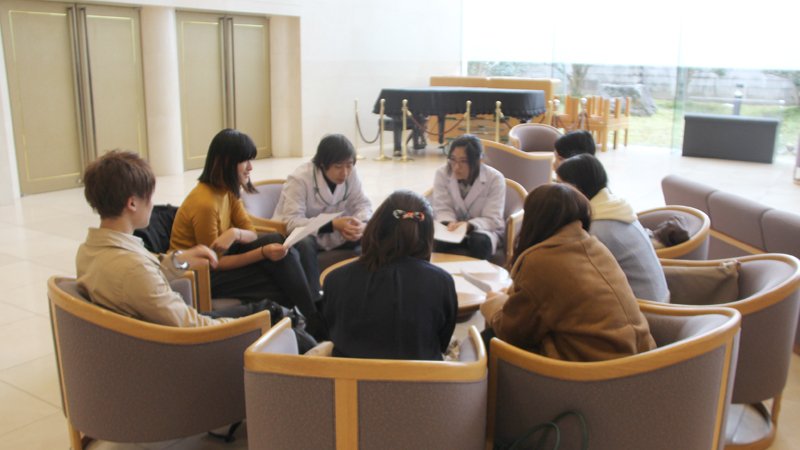I am doing two activities for my CIP: taking cooking lessons with the Kyoto Cooking Circle, and volunteering my time at Klexon to help people practice English.
The Kyoto Cooking Circle was made to teach foreigners how to make Japanese food. It only meets once a month so I have only been to two meetings. The first one we made a Japanese stew dish called Nikujyaga. The second was a special meeting to teach a group of high schoolers studying abroad from Boston and took place in a very old style Japanese house. We cooked ramen over a very old wood-burning stove, and washed the vegetables from a hand-pump in the backyard. It was really interesting to be in a very old style Japanese home.
At Klexon we sit in rows at tables and talk to the person across from us. Every ten minutes we all shift one seat down so we get to practice with new people. After that, we split into groups and have a discussion.
Klexon is for anyone wanting to practice English, so it has been helpful for meeting a wider variety of people. I’ve seen college students, English teachers, pharmacy technicians, shopkeepers, Disney World workers, and chemical engineers, to name a few. I have also met other English speakers from all over the world — France, Holland, Syria, India, and Canada. I have been very thankful for this opportunity to meet and talk with such a variety of people and have made many friends at the meetings.
We’re always given a sheet of paper with a conversation topic on it but there have been many times where we have gotten sidetracked and never discussed it. Some topics have been favorite childhood foods, favorite childhood games, favorite thing to do in winter, dream vacations, or clubs you joined in high school.
I like the assigned topics sometimes because it gets you talking about things that usually don’t come up in regular conversation. For example, the night we talked about childhood games, I was seated at a table with three Japanese people, a Dutch man, and a French man. We discovered that we had played all the same childhood games, though we had different names for them. We bonded over these shared childhood experiences that I would not have guessed were so universal.
Some things I have to talk about again and again. I always have to talk about where I’m from and what is famous there and why I came to Japan and what is difficult about Japanese.
Many people I spoke to at Klexon did not understand why I wanted to learn Japanese because they felt like most people in the more visited areas of Japan spoke at least some English. In addition, most of them seemed to have felt forced to learn English for their careers. This was not true of everyone, though, and I met others who were learning English as a hobby along with other languages.
I think Klexon has helped me be a better communicator. I was able to practice my Japanese during and after most meetings. But I also learned how to communicate better in English. Speaking to non-native English speakers forced me to speak clearly and learn how to word things so that they would be more universally understood.
Many people were shy with practicing their English. I can understand, since I’m very shy with using my Japanese. Over time I got better with keeping a conversation going, so that there would be no awkward silences.
I am really thankful I had this opportunity to meet so many different people and talk about culture.

